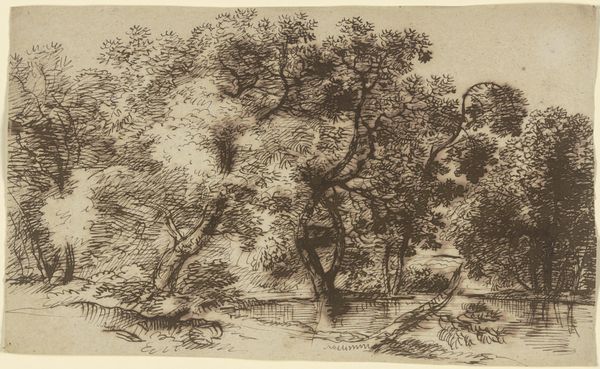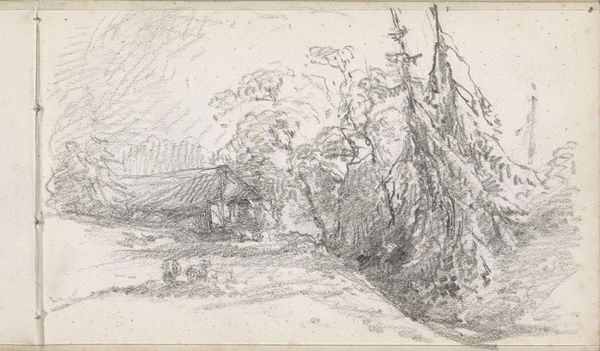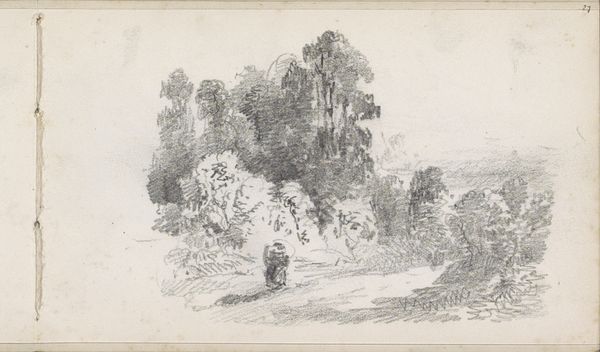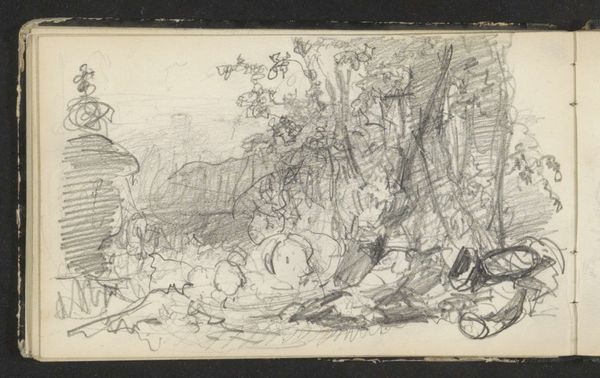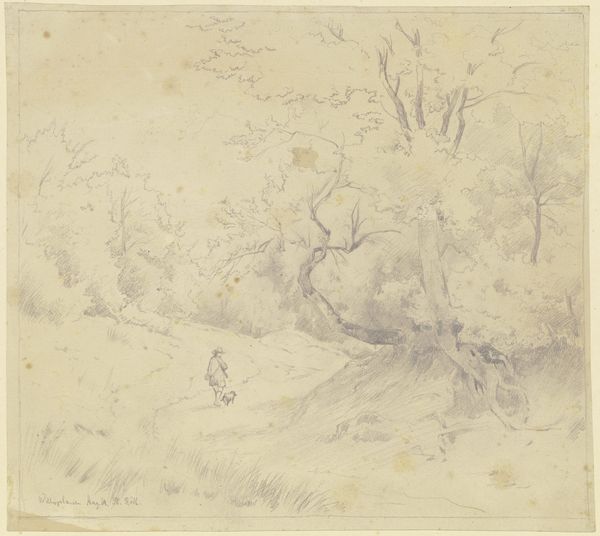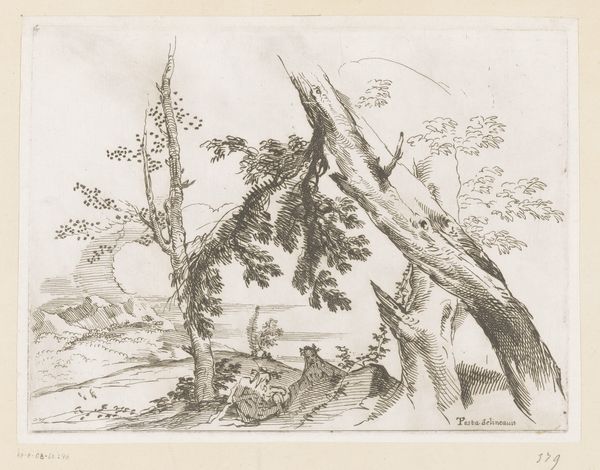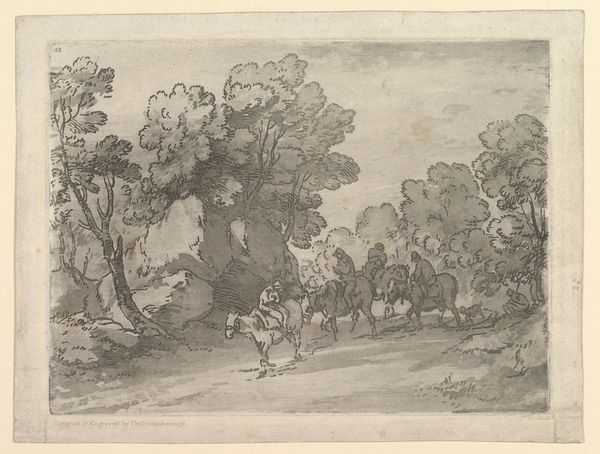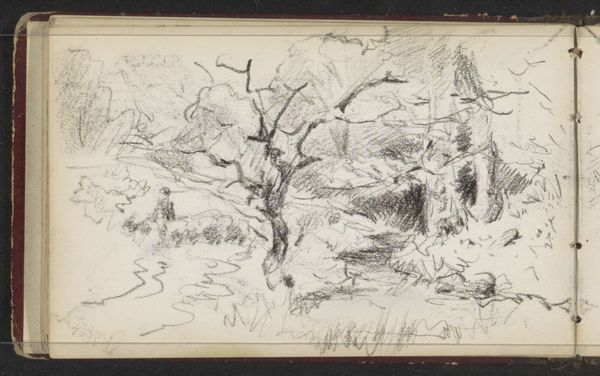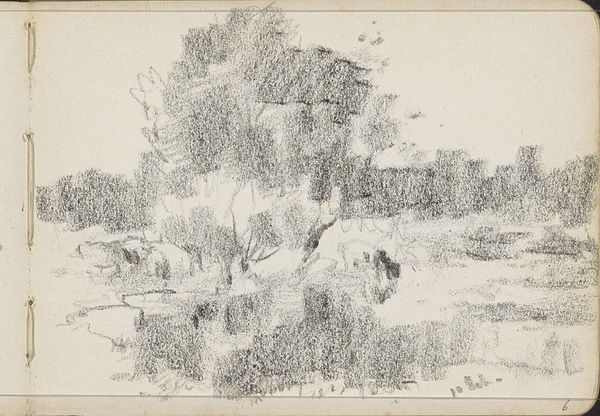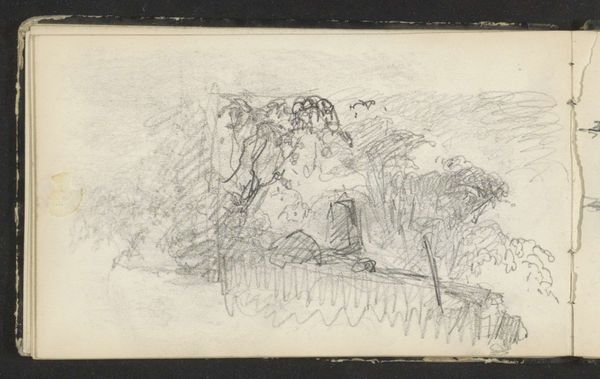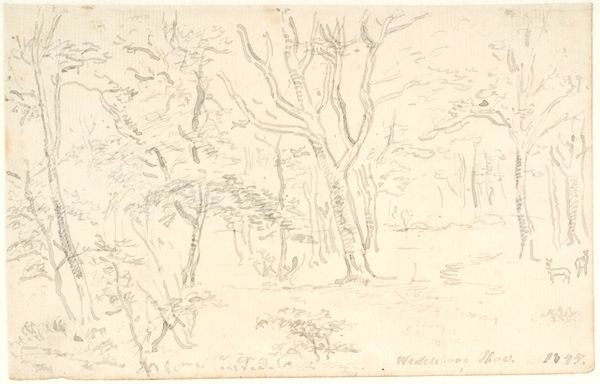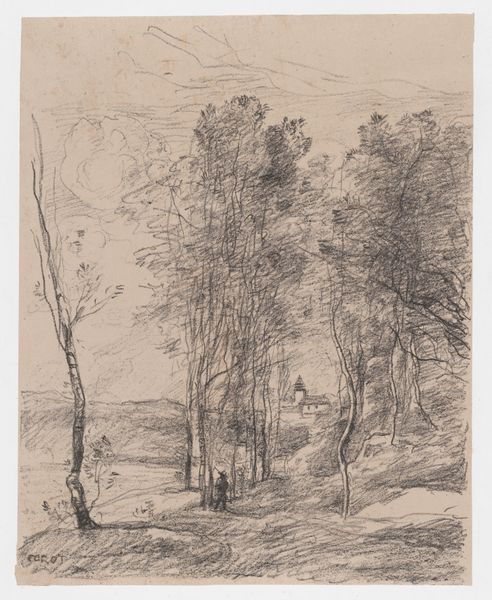
drawing, pencil
#
drawing
#
landscape
#
pencil
#
realism
Copyright: Rijks Museum: Open Domain
Editor: So, this drawing is "Landschap met bomen en struiken," or "Landscape with trees and bushes," made around 1863-1864 by Maria Vos. It's a pencil drawing at the Rijksmuseum, and I find the rough sketching kind of evocative, almost like a half-remembered dream. What do you see in this piece, in terms of what it might communicate beyond the obvious subject matter? Curator: What strikes me is the interplay between the depicted figures and the natural setting. It feels deliberate. Considering the mid-19th century context, the rapid industrialization and urbanization that threatened traditional rural life, might Vos be commenting on humanity’s relationship with nature? Do you think that is pushing it too far? Editor: I think that's a cool angle! The way the people seem almost dwarfed by the landscape lends itself to that interpretation. So it's maybe not just a simple landscape, but also a commentary on the shifting social and economic landscapes. Curator: Exactly. Consider, too, that as a woman artist in this period, Vos faced societal constraints that often limited her access to the same training and opportunities as her male counterparts. Could her choice of subject matter, the quiet observation of nature, also be interpreted as a form of resistance, a claiming of space within a patriarchal art world? Editor: That's powerful. I hadn't thought about it that way, but situating Vos within her historical context really changes how I perceive the work. It makes me wonder about the untold stories within seemingly simple landscape drawings. Curator: Precisely. By considering gender, class, and historical forces, we can peel back the layers of meaning and reveal a richer understanding of Vos's work and the world she inhabited. Editor: It is fascinating how looking at the social conditions during that era allows you to appreciate the artwork with greater depth. Curator: Indeed, and remembering that this is an ongoing process - no reading is ever final, as context continually reshapes our understanding.
Comments
No comments
Be the first to comment and join the conversation on the ultimate creative platform.
